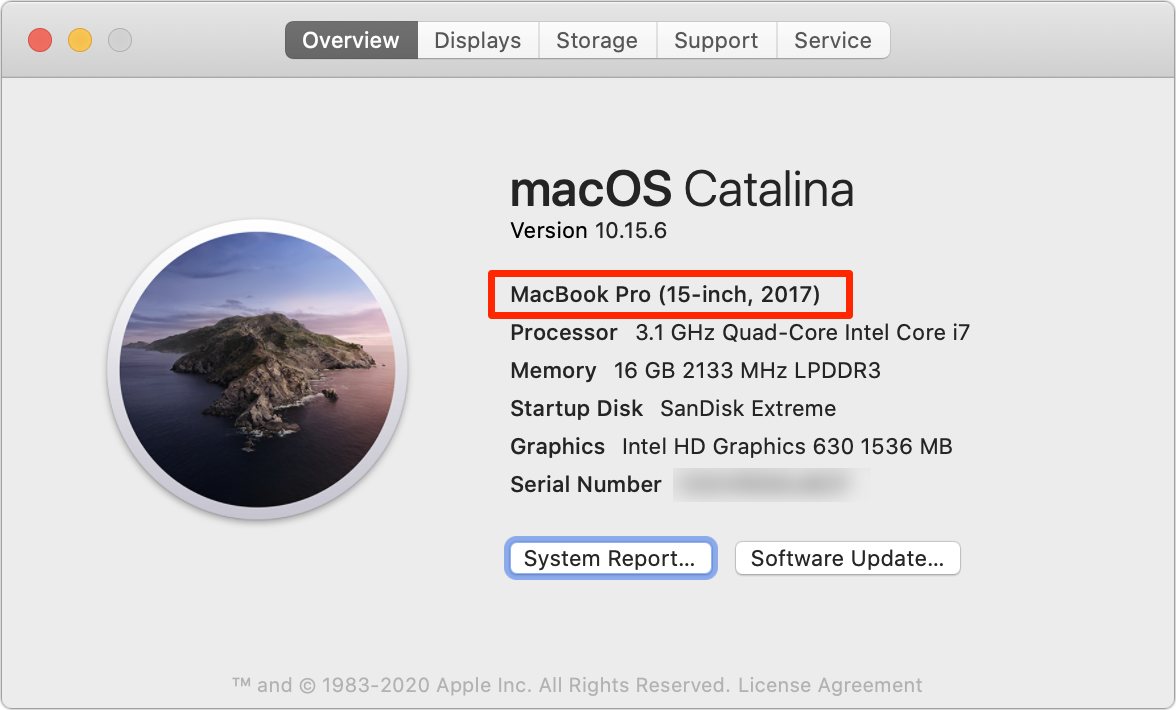Check Your Mac for Compatibility
All currently shipping Macs, as well as most models introduced within the past seven years or so, can run Big Sur. Sadly, Big Sur does drop support for some Mac models that were able to run 10.15 Catalina.
The next few pages will help you verify that your hardware is fully compatible with Big Sur.
Model Support
Big Sur does not support Mac models introduced before mid-2013. Macs that can run Big Sur include the following:
iMac (2014 or newer)
iMac Pro (2017 or newer)
MacBook (Early 2015 or newer)
MacBook Air (Mid 2013 or newer)
MacBook Pro (Late 2013 or newer)
Mac mini (2014 or newer)
Mac Pro (Late 2013 or newer)
Unfortunately, that excludes the following models that were able to run Catalina, but can go no further:
iMac (Late 2012, Early 2013, Late 2013)
MacBook Air (Mid 2012)
MacBook Pro (Mid 2012, Late 2012, Early 2013)
Mac mini (Late 2012)
Of course, that list is helpful only if you know which model of Mac you have! This is easy to check: choose Apple > About This Mac (and, if present, click More Info). You’ll see something like Figure 1; the Overview pane spells out your Mac’s model using Apple’s current terminology. Compare that to the list above and you’re done.

If your Mac isn’t in the list above, then regardless of its age or speed, I’m very sorry to say that it won’t run Big Sur.
New Macs that ship after Big Sur is released will have Big Sur preinstalled; if necessary, you can use the Migration Assistant to transfer files, accounts, and settings from your old Mac, as I explain in my TidBITS article How to Migrate to a New Mac (which is still largely accurate even though it was published in 2016).
RAM
Apple hasn’t stated how much RAM Big Sur requires, but since all Macs that can run Big Sur shipped with at least 4 GB of RAM, that appears to be the effective minimum. However, even though Big Sur can run in 4 GB of RAM, I strongly suggest having more if your budget allows and your Mac’s RAM is user-upgradable.
In general, the more RAM you have, the better your Mac’s performance. If your Mac can hold 16 GB of RAM or less, I recommend maxing it out if possible. If it can hold more than 16 GB and you’re doing heavy-duty video, audio, or graphics work, you might want to go even higher. But very few people would benefit from the maximum of 128 GB of RAM you can put in an iMac Pro, let alone the 1.5 TB you can put in a 2019 Mac Pro.
To see how much RAM your Mac currently has installed, choose Apple > About This Mac and look at the Memory line.
Free Disk Space
As of publication time, Apple has not yet said how much free disk space Big Sur officially requires. Catalina required about 12.5 GB of disk space if you were upgrading from 10.11 El Capitan or later, or 18.5 GB if you were upgrading from an earlier version—and the Big Sur installer is larger than the Catalina installer. So, to allow for a margin of error, I recommend starting with at least 20 GB of free space before downloading the installer. More free space is even better, of course. Some Big Sur features will require increasing amounts of disk space as you use them, so it never hurts to have room to grow.
